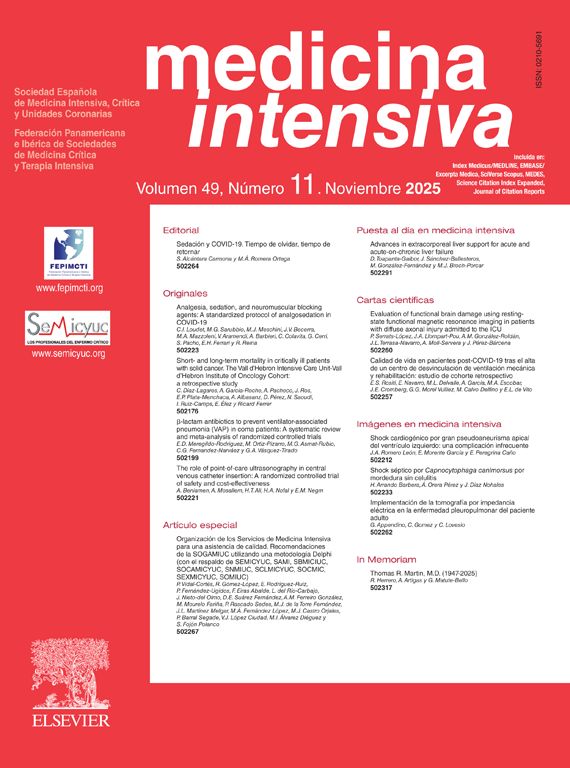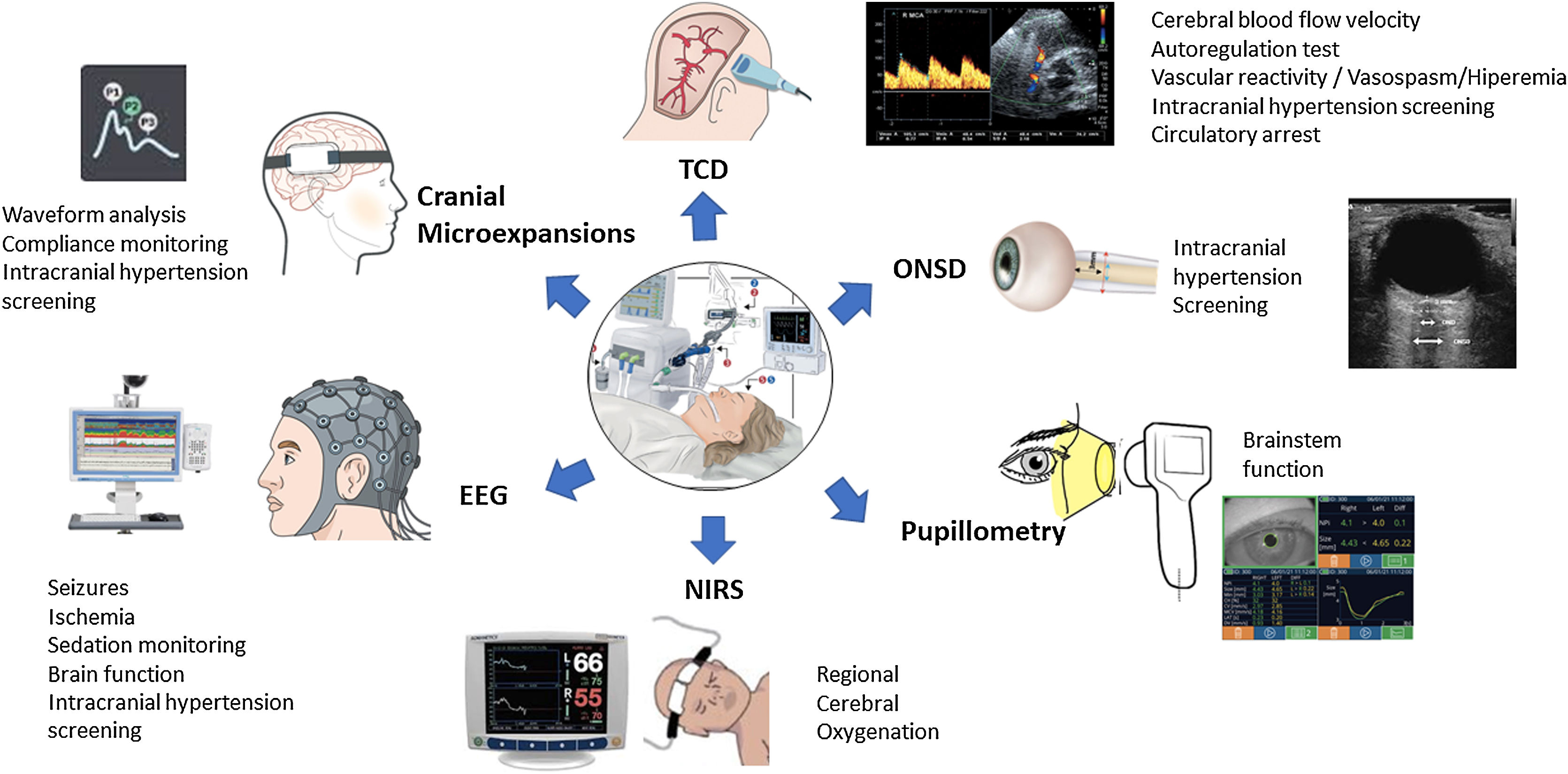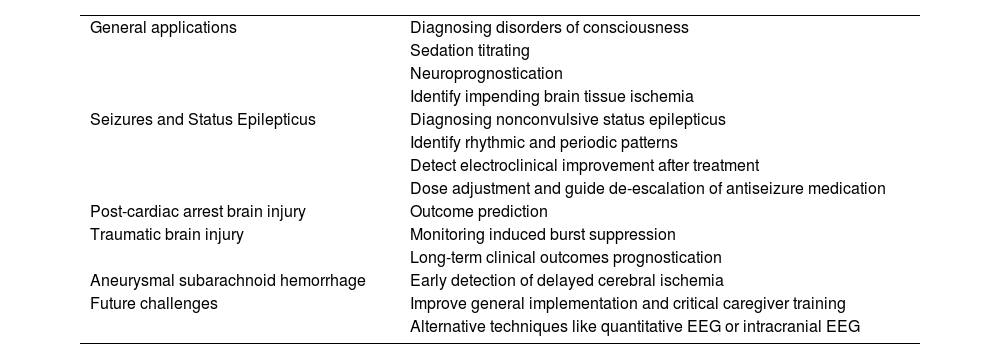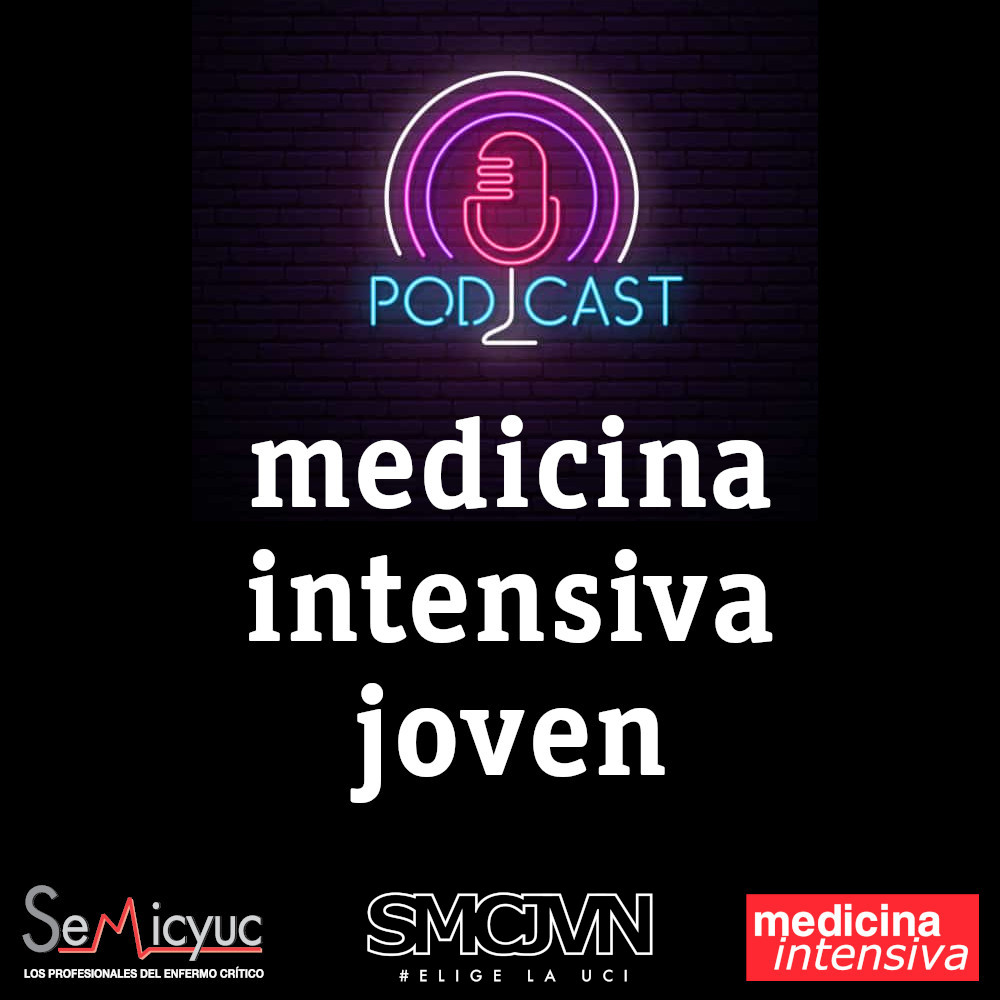
Editado por: Juan Antonio Llompart-Pou - Specialist in Intensive Care Medicine, Doctorate in Health Sciences, Universitat Illes Balears. Department of Intensive Care Medicine, Trauma and Neurocritical ICU, Hospital Universitari Son Espases. Palma, Spain
Última actualización: Noviembre 2025
Más datosClinical neurological examination remains the gold standard to detect, diagnose, and follow-up responses to treatment in acute neurological conditions in the critical care setting. However, in patients with severe neurological deficits at baseline or those requiring sedatives, detecting neurological deterioration can be challenging. In this scenario, noninvasive bedside neuromonitoring as a part of multimodal strategies can be useful in the avoidance of secondary brain injury and in the selection of which patient with acute brain injury would benefit from invasive neuromonitorization.
El examen neurológico clínico sigue siendo el patrón oro para detectar, diagnosticar y realizar el seguimiento de las respuestas al tratamiento en el paciente neurocrítico. Sin embargo, en pacientes con déficits neurológicos graves al inicio o en aquellos que requieren sedantes, detectar el deterioro neurológico puede ser un reto. En este escenario, la neuromonitorización no invasiva a pie de cama como parte de estrategias multimodales puede ser útil para evitar lesiones cerebrales secundarias y para seleccionar qué paciente con lesión cerebral aguda se beneficiaría de una neuromonitorización invasiva.
Artículo
Diríjase al área de socios de la web de la SEMICYUC (www.semicyuc.org ) y pulse el enlace a la revista.










